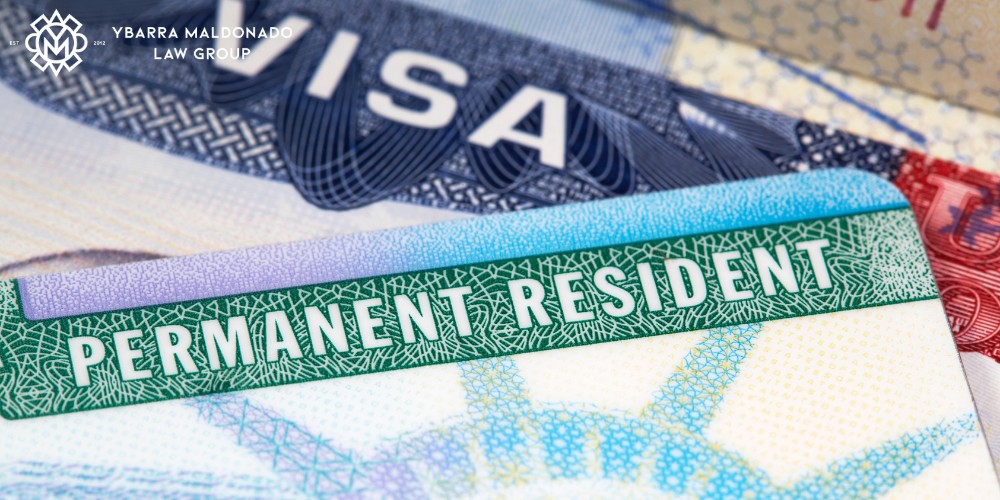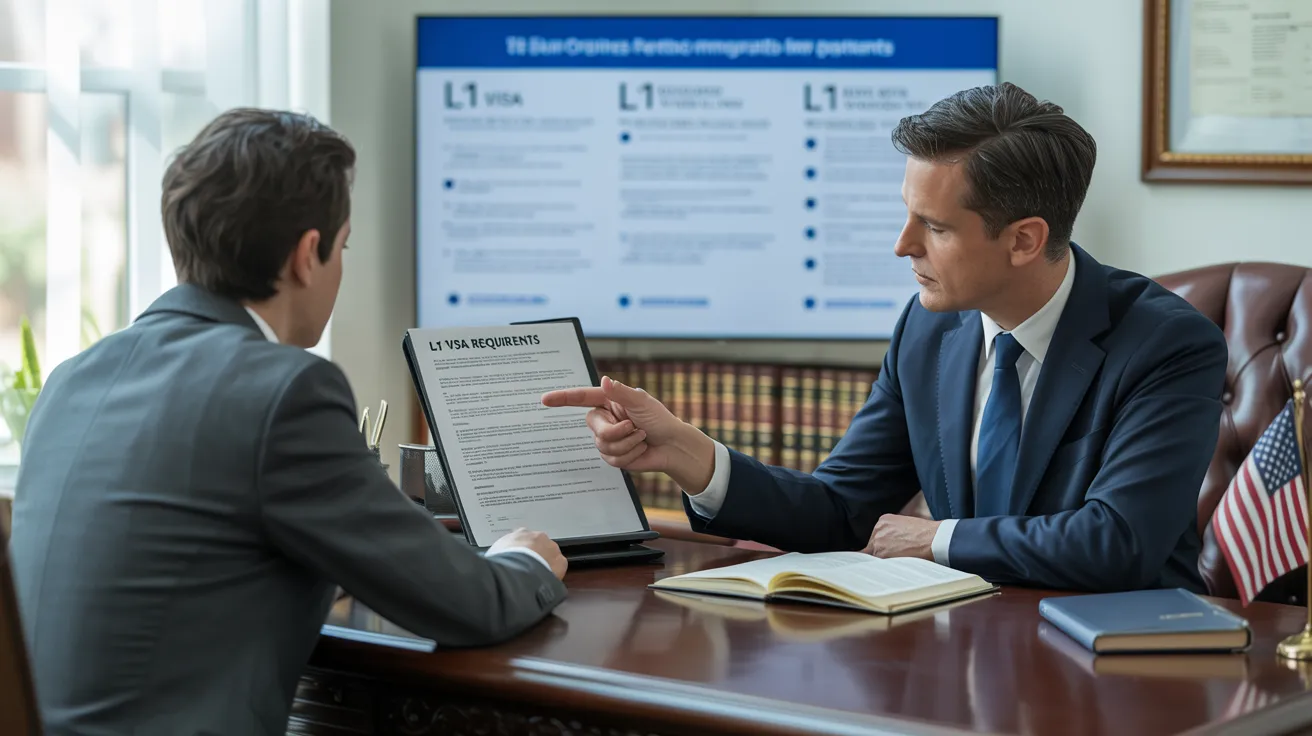Everything You Need to Learn About the L1 Visa: Benefits, Demands, and Much more
The L1 Visa serves as a vital device for international companies looking for to move workers to the United States, facilitating both operational performance and the transfer of specialized knowledge. With unique classifications for executives and specialized specialists, this visa presents numerous advantages, including possible paths to irreversible residency. Recognizing the eligibility demands and application process is important for an effective shift. As we take a look at the ins and outs of the L1 Visa, it ends up being clear that steering its complexities is critical for organizations aiming to take advantage of worldwide skill properly. What challenges might you experience along the road?
Summary of the L1 Visa

Kinds Of L1 Visas

Numerous kinds of L1 visas cater to the varied demands of multinational business wanting to move workers to the United States. Both key categories of L1 visas are L1A and L1B, each developed for specific roles and responsibilities within an organization. L1 Visa Requirements.The L1A visa is intended for supervisors and execs. This category enables business to transfer individuals who hold supervisory or executive placements, enabling them to supervise operations in the U.S. This visa is valid for a preliminary period of up to three years, with the possibility of extensions for a total amount of approximately seven years. The L1A visa is specifically beneficial for firms seeking to establish a solid management presence in the U.S. market.On the various other hand, the L1B visa is designated for workers with specialized knowledge. This consists of people that have innovative expertise in particular locations, such as proprietary innovations or special processes within the company. The L1B visa is likewise valid for an initial three-year duration, with extensions readily available for up to 5 years. This visa classification is ideal for business that require employees with specialized skills to improve their operations and preserve an affordable edge in the U.S.Both L1A and L1B visas allow for dual intent, implying that visa owners can make an application for permanent residency while on the visa. Recognizing the differences between these 2 classifications is crucial for services intending to navigate the complexities of staff member transfers to the United States successfully
Eligibility Requirements
To receive an L1 visa, both the employer and the staff member should fulfill particular qualification standards set by U.S. migration authorities. The L1 visa is created for intra-company transferees, enabling international firms to transfer staff members to their united state offices.First, the employer must be a certifying organization, which indicates it must have a moms and dad company, branch, subsidiary, or associate that is working both in the U.S. and in the international country. This relationship is vital for showing that the employee is being transferred within the same company framework. The employer needs to additionally have actually been doing business for at the very least one year in both locations.Second, the staff member should have been employed by the foreign firm for at the very least one continual year within the three years preceding the application. This employment must be in a managerial, executive, or specialized expertise capacity. For L1A visas, which satisfy managers and execs, the staff member has to demonstrate that they will remain to operate in a comparable ability in the U.S. For L1B visas, meant for staff members with specialized understanding, the specific have to have unique knowledge that contributes considerably to the company's operations.
Application Process
Navigating the application procedure for an L1 visa entails numerous necessary actions that need to be completed precisely to ensure an effective result. The very first step is to figure out the proper category of the L1 visa: L1A for managers and execs, or L1B for staff members with specialized knowledge. This distinction is significant, as it affects the documentation required.Once the category is identified, the united state company have to submit Kind I-129, Request for a Nonimmigrant Worker. This form needs to consist of thorough information concerning the firm, the worker's duty, and the nature of the work to be done in the U.S. Accompanying paperwork typically consists of evidence of the partnership in between the united state and international entities, evidence of the employee's qualifications, and details regarding the job offer.After entry, the united state Citizenship and Migration Services (USCIS) will assess the request. If accepted, the employee will certainly be alerted, and they can then make an application for the visa at an U.S. consulate or consular office in their home country. This includes finishing Kind DS-160, the Online Nonimmigrant copyright, and arranging an interview.During the meeting, the candidate should offer different records, including the accepted Type I-129, proof of work, and any added sustaining proof. Complying with the meeting, if the visa is approved, the staff member will certainly receive a visa stamp in their ticket, permitting them to get in the U.S. to benefit the funding company. Proper prep work and comprehensive documents are key to navigating this process properly.
Advantages of the L1 Visa
Among the notable benefits of the L1 visa is its ability to help with the transfer of essential workers from worldwide workplaces to the United States. This visa is specifically valuable for multinational companies seeking to maintain consistency in operations and leadership throughout borders. By enabling executives, supervisors, and specialized employees to function in the united state, organizations can assure that their most important skill is offered to drive organization objectives.Another considerable advantage of the L1 visa is its relatively straightforward application procedure compared to other work visas. Organizations can seek for the L1 visa without the demand for a labor qualification, which streamlines the employment of foreign staff members. In addition, the visa can be granted for a first duration of up to 3 years, with the possibility of expansions, facilitating long-term assignments.The L1 visa additionally offers a path to long-term residency. Workers on L1A visas (for managers and executives) can make an application for an Environment-friendly Card after one year, accelerating their adjustment to long-term standing. This function is an appealing reward for learn more talented people looking for security in the united state workforce.Additionally, L1 visa holders can bring their immediate member of the family to the united state under L2 status, enabling partners and children to reside and examine in the nation, improving the total allure of this visa category. In general, the L1 visa serves as a necessary tool for international companies, fostering cross-border collaboration and ability movement.
Common Difficulties
While the L1 visa supplies numerous advantages for multinational firms and their workers, it is not without its obstacles. One remarkable hurdle is the rigid documents and qualification demands imposed by the U.S. Citizenship and Migration Services (USCIS) Firms must provide comprehensive proof of the foreign employee's credentials, the nature of business, and the qualifying partnership in between the U.S. and international entities. This process can be lengthy and might need legal competence to navigate successfully.Another challenge is the capacity for scrutiny throughout the application process. USCIS policemans might question the legitimacy of business operations or the staff member's function within the organization. This analysis can result in hold-ups or even rejections of the copyright, which can considerably impact the firm's operational strategies and the employee's career trajectory.Furthermore, the L1 visa is linked to the funding employer, which suggests that work changes can complicate the visa condition. If an L1 visa holder wants to switch companies, they should usually seek a various visa category, which can include intricacy to their immigration journey.Lastly, keeping compliance with L1 visa policies is vital. Employers should guarantee that their employee's function straightens with the initial application which the business proceeds to fulfill the qualification requirements. Failure to do so can lead to retraction of the visa, impacting both the worker and the organization. These obstacles necessitate extensive prep work and ongoing administration to ensure an effective L1 visa experience.
Tips for Success
To efficiently navigate the L1 visa process, thorough preparation is vital. Start by completely recognizing the particular requirements for the L1 visa group you are applying for, whether L1A for supervisors and execs or L1B for employees with specialized knowledge. Gather all needed documents early at the same time, consisting of evidence of your work background, organizational structure, and the nature of business operations.Engage lawful guidance experienced in immigration regulation to guide you via the intricacies of the application. A lawyer can assist assure that your application is total, precise, and compelling. They can also aid in planning for potential ask for evidence (RFEs) by proactively dealing with areas that may raise questions.Additionally, keep clear communication with your employer, who need to supply important support for your application. L1 copyright copyright. Verify that they recognize their duties, consisting of submitting the necessary applications and supplying documents that corroborates your function in the organization.Prepare for the visa meeting by exercising solutions to typical questions concerning your professional background and the nature of your employment. Demonstrating confidence and clarity can considerably influence the end result of your application
Often Asked Questions
Can Family Members Accompany L1 Visa Owners?
Yes, family members can accompany L1 visa owners. Partners and unmarried youngsters under 21 years old are eligible for L2 visas, which enable them to live and research in the USA during the L1 owner's keep.
The Length Of Time Can L1 Visa Holders Remain In the U.S.?
L1 visa owners can originally remain in the U.S. for up to three years (L1 Visa). This duration might be extended, enabling a maximum stay of 7 years for L1A visa owners and five years for L1B visa owners
Is the L1 Visa a Dual Intent Visa?

Can L1 Visa Owners Get a Permit?
Yes, L1 visa holders can apply for a permit - L1 Visa. The L1 visa sustains twin intent, allowing holders to pursue irreversible residency while maintaining their non-immigrant standing, facilitating a smoother transition to a permit
What Takes place if an L1 copyright Is Denied?
If an L1 copyright is denied, the candidate might get a notification outlining the reasons for denial. L1 Visa. They can appeal the choice, reapply, or explore alternative visa options depending upon their scenarios and certifications
Final thought
In recap, the L1 Visa functions as an important instrument for international companies seeking to move staff members to the USA. Recognizing the distinctions between L1A and L1B categories, along with the qualification needs and application procedures, is vital for effective navigation of this non-immigrant classification. The advantages provided, consisting of streamlined applications and paths to permanent residency, better improve its appeal. Addressing common obstacles successfully can lead to an extra positive result in the copyright process.